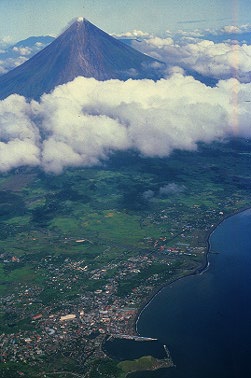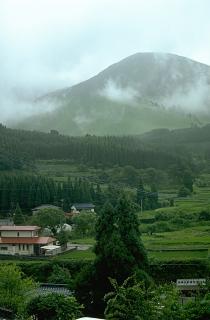
In some places, for example many islands, it is the only land available to live on. Other people live on volcanoes because they are beautiful or because it is the only place where the land is affordable.
Volcanic deposits are also used as building materials, so people choose to live near these to mine and quarry the rock.
The main good effect that volcanoes have on the environment is to provide nutrients to the surrounding soil. Volcanic ash often contains minerals that are beneficial to plants, and if it is very fine ash it is able to break down quickly and get mixed into the soil. Therefore, towns grow around volcanoes, and use the fertile soil to grow crops and food.

Picture obtained from http://volcano.und.nodak.edu/vw.html without permission.
What good things do volcanoes bring to the Earth?
They help to keep it cool by removing heat from the interior. They have produced the atmosphere and the water of the oceans. They make islands and add to the continents.
Volcanoes create new environments for plants and animals to migrate into. For example, in Hawaii some crickets adapted to the barren lava flows where they eat material blown in on the wind. Crickets have also adapted to lava tubes. Carnivorous spiders have followed these crickets and evolved to both environments. Remember, all of Hawaii is volcanic in origin. Without the volcanoes, the island's rich and diverse plant (and animal, especially insects) life would not exist.
Another benefit might be the fact that volcanic slopes are often rather inaccessible, especially if they are steep. Thus they can provide refuges for rare plants and animals from the ravages of humans and livestock.

Picture obtained from http://www.volcano.si.edu/gvp/ without permission.